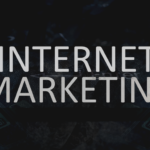The decade of the 1950s seems to be an important period for the growth of merchandise marketing, with another burst of activity in the 1970s. Companies began to see the benefit of promoting their brand and identity with gift products of all kinds. As you can imagine, catalogues have been developed to offer an array of items that could be customized for valued customers. These products became effective tools in the sales process.
This now-massive industry has peak seasons, with Christmas and other holidays as important times during the year to present products to customers or make branded items available to anyone who wished to purchase them. Companies who effectively use this marketing tool make sure their catalogues are sent to targeted audiences. In addition, the industry has grown to the point of having major exhibitions in several locations, including Las Vegas and sites in Europe.
If you believe the bottled-water “craze” is a very recent development, you may want to update your information (or back-date it). The practice of carrying water with you personally is certainly a worldwide habit, as evidenced by the billions of gallons of bottled water sold around the planet.
Corporate Marketing
There are two good reasons to use a personalised item, one of which has to do with satisfying yourself and, perhaps, showing friends you have something that is one of a kind. The second reason is certainly more practical, and can be an effective business-marketing method, if it’s done correctly.
To set the stage for an informative discussion about personalised products, it might be wise to look at the history of promotional products. According to Wikipedia, the earliest record of such items comes from the 18th century (in the United States). Though there are probably other uses earlier than this, the reference to George Washington’s commemorative election buttons can provide a starting point.
As time passed, many for-profit companies began to use rulers, calendars, and similar items for advertising, with a major increase in use in the form of book bags, fans, aprons, and more. A trade association was established in the early 20th century, aptly named the Promotional Products Association (PPA). That organisation has thousands of members around the world today.
Marketing 21st Century Products
By some estimates, the use of promotional products is already topping $20 billion as an industry each year in the U.S. Why? One study shows these items have a unique influence on the behaviour of customers. The Promotional Products Association mentioned earlier indicates that almost 90% of customers remember the branded items they received, which makes water bottles a great way to implant your image or message in the customer’s mind.
For example, people have been drinking water from prepared bottles for 300 years or more. In the early 20th century, fear of disease led to an increase in the use of purified water. Plastic bottles were introduced into the process a few decades ago, which made bottled water much less expensive. It did, however, create a trash/recycling problem. Enterprising companies found a way to address this issue while marketing their company name or brand at the same time.
It’s become quite common to bring water along in carry-containers, so it just makes sense to use personalised water bottles as a key promotional item. Customers who wish to have a bottle that’s unique to them may even search for one with a pertinent phrase or personal reminder. If you’re seeking an untried method of promoting your brand or image, this could be it! Put a logo or a key slogan on the bottles and chances are good your message will find its way across the miles.
The study also shows that the most popular items are pens, mugs, USB drives, and wearable products, such as caps. There are distinct reasons for this, naturally. When you use a personalised item you are building a comfortable relationship with employees, customers, and anyone else on your list. When these products are presented as gifts, the effect is enhanced. As indicated by the PPA study, you are creating a lasting impression with a useful product putting your company name in their mind each time it’s used.
In Conclusion
When you consider the benefits of using a promotional product, and weigh those against the affordability, your advertising expenditure can reach a long way. You’re also able to target a certain audience, one of the key elements in successful marketing. To put it in simple terms, your low level of expense has a long and effective reach.








